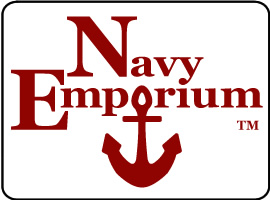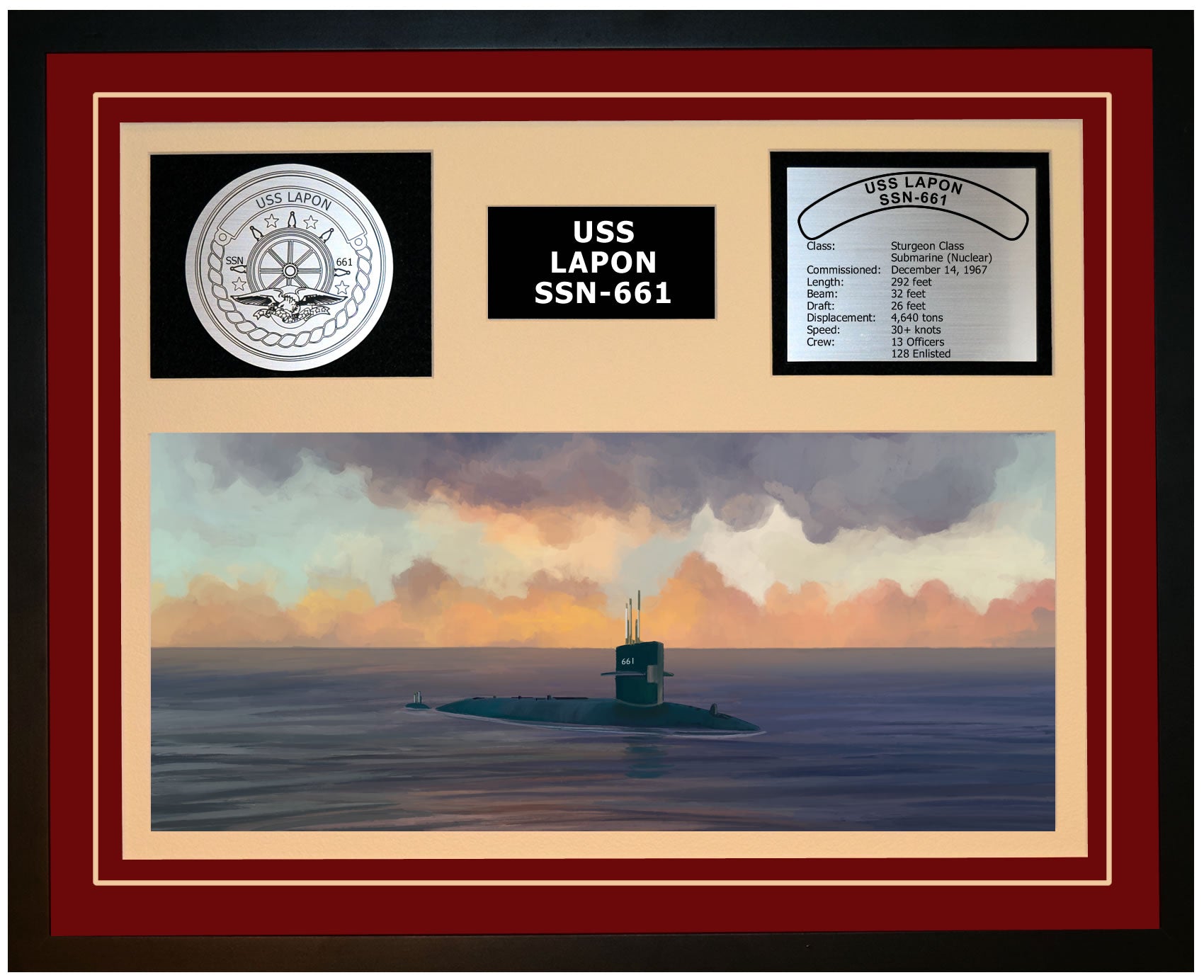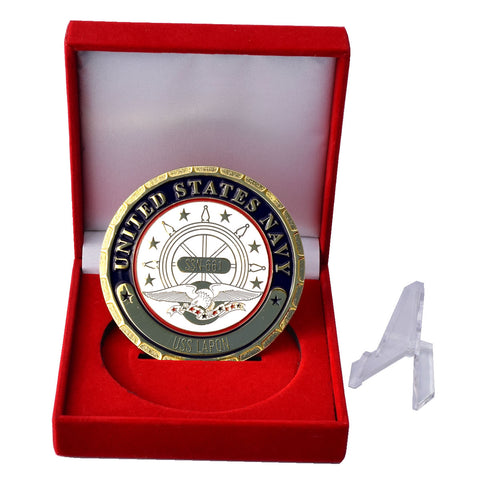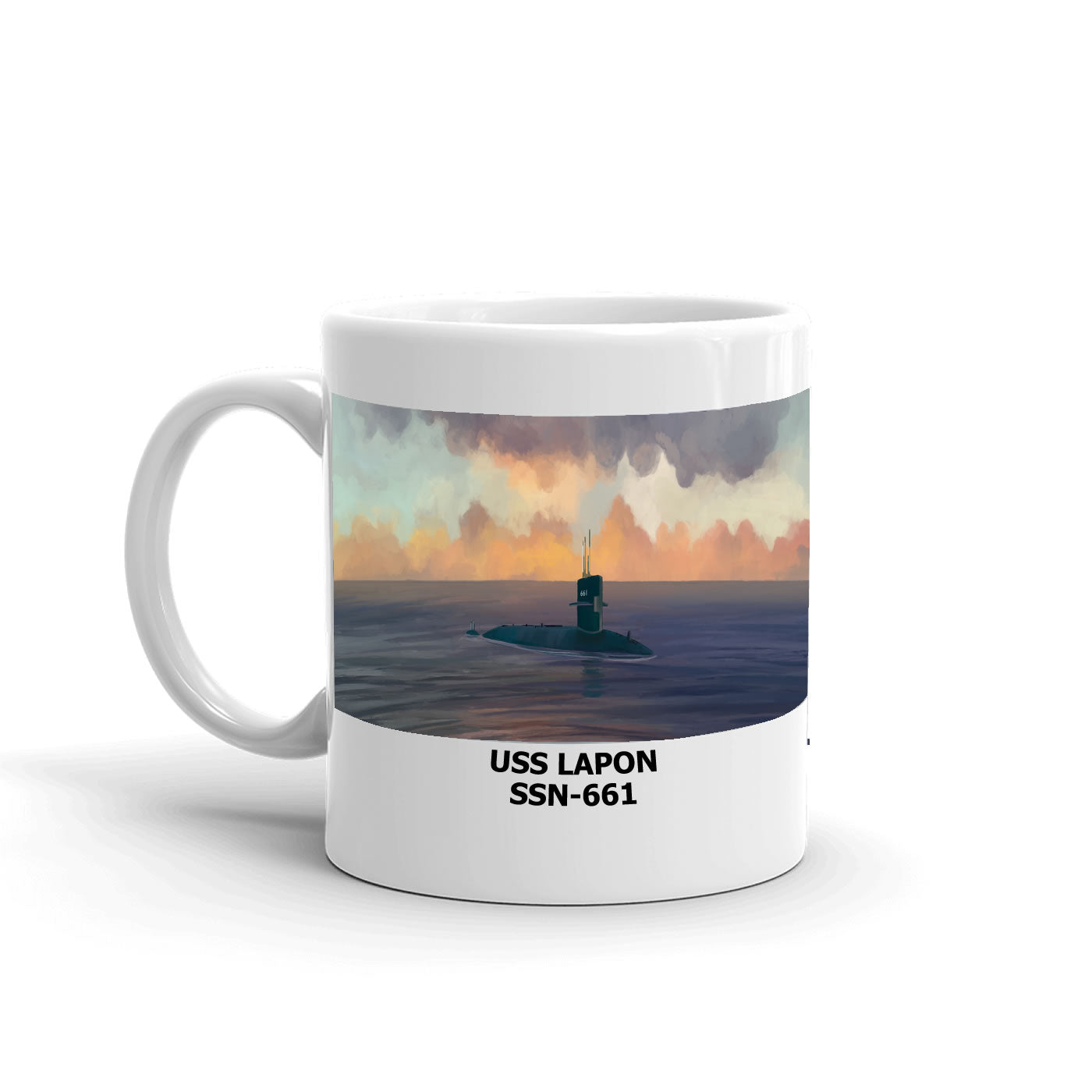The USS Lapon SSN-661 was an addition to Americas submarine fleet during the Cold War, representing the pinnacle of submarine craftsmanship and technology. It was built at the Newport News Shipbuilding and Dry Dock Company in Virginia with construction starting on July 26, 1963. The construction process required workmanship and advanced naval engineering to incorporate cutting edge nuclear propulsion systems and submarine warfare capabilities. On December 16, 1966, the submarine was officially launched, followed by outfitting and sea trials before its commissioning on August 14, 1967. This ceremony marked its entry into the US Navy as a vessel prepared to serve with stealth, agility, and formidable power.
The name 'Lapon' held a history as it was bestowed upon this vessel as its second namesake in the US Navy. It pays tribute to the USS Lapon (SS-260), a Balao class submarine renowned for its spirit and successful patrol missions in the Pacific Theater during World War II. The term 'Lapon' itself has its origins in French from the word 'lapon' which means 'the one who is daring'. This name perfectly suits the submarine service. This rich heritage was proudly embodied by SSN 661 with every sailor on board living up to the spirited name.
As a part of the Sturgeon class also known as "637 class" submarines, USS Lapon SSN-661 possessed attributes that set these attack submarines apart. These submarines were designed with a focus on reducing signatures and enhancing surveillance capabilities. Notably, Lapon featured a hull design that surpassed classes and an innovative BQQ 2 sonar system developed to detect and track enemy submarines with exceptional precision. The vessels sail was also specially configured to accommodate warfare and communication systems making it an impressive asset for covert operations and gathering crucial information.
Throughout its years, USS Lapon made a mark on strategic operations of the US Navy during the Cold War era. The USS Lapon possessed a range of capabilities allowing it to undertake missions such as surveillance, reconnoissance, and even direct engagement with enemy naval forces if necessary. Throughout its history, the submarine undertook classified missions during the Cold War era. These experiences have greatly influenced the tactics, training, and values that shape todays warriors. The valor and vigilance demonstrated by the USS Lapon and its crew exemplify the lasting legacy of the Silent Service.
Belonging to the Sturgeon class submarines which were primarily designed for submarine warfare (ASW), the USS Lapon was also equipped to engage surface ships and lay mines. These submarines marked Americas foray into multipurpose attack submarines, capable of operating both in open seas and closer to shore in littoral waters. Being one of the units in its class provided advancements over previous boats, including a quieter machinery design and more advanced sonar equipment. With submerged endurance and mobility, it served as an asset in ensuring US Navy dominance over strategic waters during times of geopolitical tension.
On a summer day during the Vietnam War, the USS Lapon was officially commissioned, symbolizing Americas determination and technological advancements. The crew, consisting of trained officers and enlisted personnel, stood proudly on board as the American flag was raised- signifying their readiness to protect US interests worldwide. Under the leadership of Commander Willard H. Johnson, the ship embarked on its voyage with a sense of duty and a commitment to excellence. As it set sail into waters amidst Cold War tensions, the USS Lapon carried with it expectations that matched its remarkable capabilities.
Silent Innovation: Exploring the Technology and Capabilities of USS Lapon SSN-661
As part of the Sturgeon class attack submarines designed during the Cold War era, the USS Lapon SSN-661 showcased impressive naval innovation. Its hull took on a teardrop shape which greatly minimized noise and allowed for navigation through water. Constructed using HY 80 steel, this vessel possessed deep diving capabilities, surpassing depths of 400 meters. Such ability ensured evasion from enemy detection, while granting an advantage in carrying out covert operations.
The USS Lapon measuring about 292 feet in length and 31.7 feet in beam was an spacious submarine that could effectively accommodate technology of its time and meet the needs of its crew.
In terms of technology, the USS Lapon was constructed with a cutting edge S5W pressurized water reactor, which powered a steam turbine engine. This innovative setup enabled the submarine to travel at speeds and stay submerged for periods without the requirement of surfacing for refueling. By eliminating the reliance on surface air, the Lapon became a force underwater; it boasted sonar systems such as BQQ 5 passive and BQS 15 active, capable of detecting and classifying targets. Additionally, it possessed a BSY 1 combat system that enhanced fire control capabilities. The submarine also featured navigation and communication suites, ensuring integration into the Navy's networked operations while enhancing safety and mission efficiency.
When it comes to armament, the USS Lapon was equipped to handle threats and carry out mission profiles. Initially, it had four 21 inch torpedo tubes that could launch Mark 48 torpedoes designed for targeting enemy submarines and surface vessels. As technology progressed over time, upgrades were made to accommodate Harpoon and Tomahawk submarine launched cruise missiles. These additions provided the submarine with the ability to strike targets from a distance, giving it an offensive advantage that went beyond traditional underwater warfare.
Furthermore, the submarine had an arsenal, allowing for the deployment of mines and support for operations. The USS Lapon could secretly retrieve forces personnel, serving as a covert insertion point that was highly valuable during intelligence gathering missions, sabotage operations, and reconnaissance. Its adaptability made it an asset for endeavors beyond conventional naval combat. This powerful combination of stealth, technology, and firepower ensured that the USS Lapon remained a component of the United States underwater defense system throughout its service.
Upgrades, Mission Capabilities and Fleet Contribution
During its lifespan, USS Lapon SSN-661 underwent upgrades to ensure that it remained at the forefront of naval technology and capability. As a Sturgeon class attack submarine, Lapon was known for its versatility and endurance within the fleet. One notable modernization occurred in the 1980s when her sonar systems were likely upgraded to enhance detection capabilities against evolving undersea threats. Furthermore, it was crucial to enhance her electronic warfare capabilities and fire control systems to ensure her effectiveness in the evolving landscape of automated and networked engagements. These upgrades played a role throughout her lifespan, enabling her to undertake a wide range of missions from surveillance to direct combat.
The USS Lapons varied mission capabilities underscored her significance within the US Navy fleet. With a collection of torpedoes housed in her bow tubes, she possessed the ability to proficiently track and engage enemy submarines and surface vessels. Moreover, thanks to her features and advanced sonar technology, she excelled as a platform for intelligence gathering surveillance operations and reconnaissance (ISR). In addition, Lapon's capabilities extended beyond that; she had the capacity to secretly deploy operation forces and retrieve them for missions.
Lapon's invaluable contribution to the fleet can be encapsulated by highlighting its versatility and reliability across decades of environments. As a component in submarine warfare (ASW) operations, it acted as a deterrent against Soviet submarine threats- ensuring sea control and safeguarding Allied naval assets.
During her time in service, Lapon also played a role in testing and improving strategies and equipment. This included developing countermeasures against torpedoes and deploying mines from submarines. These advancements greatly enhanced the defensive capabilities of the submarine force. The expertise of Lapon's crew and their proficiency in exercises and missions significantly raised the standards of the US submarine community.
Beyond her contributions to operations, USS Lapon SSN-661 played a vital role in supporting US naval strategy during the latter part of the 20th century. Acting as a guardian of the seas, she not only provided tangible defense, but also served as an important strategic deterrent due to her potential for projecting force. In times when tensions escalated into confrontations, such as during the 1973 Yom Kippur War when she was deployed to the Mediterranean, Lapon's ability to conduct surveillance and gather intelligence proved invaluable. This solidified her position as a cornerstone in the US Navy's efforts to uphold security and project power whenever necessary to protect national interests.
Tales and Memories Aboard the USS Lapon
History and Achievements of USS Lapon SSN-661
USS Lapon, a nuclear powered attack submarine belonging to the Sturgeon class, played a significant role in Cold War operations and beyond. Launched on December 16, 1966 and put into service on August 14, 1967, this ship was specifically designed for submarine warfare gathering intelligence and as a formidable presence to project American naval power. Over the course of years in operation, Lapon embarked on secret deployments that focused on submarine activities. She regularly patrolled the Atlantic Ocean, Mediterranean Sea, and Arctic region- playing a role in the game of cat and mouse between the United States and the Soviet Union during this era of high tension and spying.During her service period-though specific deployment details remain classified- Lapon took part in Cold War confrontations and training exercises. It is known that in the 1970s, she conducted patrols and special missions that showcased her adaptability and reliability in reconnaissance and surveillance operations. On these occasions, Lapon gathered intelligence to maintaining a balance of power while informing decision making during politically sensitive times. Operating silently beneath the waves, this submarine diligently monitored enemy movements by deploying listening devices and tracking submarines- a contribution to NATOs efforts in countering Soviet undersea capabilities.
Throughout her service, the USS Lapon received accolades and recognition for its performance, efficiency of the crew, and valuable contributions to the navy's mission. The submarine was honored with Battle "E" awards, highlighting its status as the performing submarine in its squadron and showcasing the outstanding skills of its crew. Furthermore, the Lapon was acknowledged with Meritorious Unit Commendations and Navy Unit Commendations demonstrating their performance across a range of missions. Each award and citation praised the professionalism, perseverance, and unwavering dedication of everyone who served onboard- from commanding officers to enlisted personnel.
After a career spanning over twenty five years, the USS Lapon SSN-661 was finally decommissioned on May 8, 1990. It leaves behind a legacy marked by service and strategic significance; it never had to engage in action but stood as a powerful deterrent during one of history's most critical military standoffs. While its role in conflicts primarily involved deterrence, this submarines true legacy lies in successfully executing missions with safety and effectiveness-a testament to the United States Navy's commitment to preparedness and unparalleled undersea warfare capabilities. After being decommissioned, Lapons sail has been carefully exhibited at the American Legion Post 639, in Springfield, Missouri. It serves as a lasting tribute to the submarines service and the bravery of her crew.
USS Lapon SSN-661 Ship Specifications
| Specification | Details |
|---|---|
| Class | Sturgeon Class Submarine (Nuclear) |
| Commissioned | December 14, 1967 |
| Displacement | 4,640 tons |
| Length | 292 feet |
| Beam | 32 feet |
| Draft | 26 feet |
| Speed | 30+ knots |
| Complement | 13 Officers 128 Enlisted |






